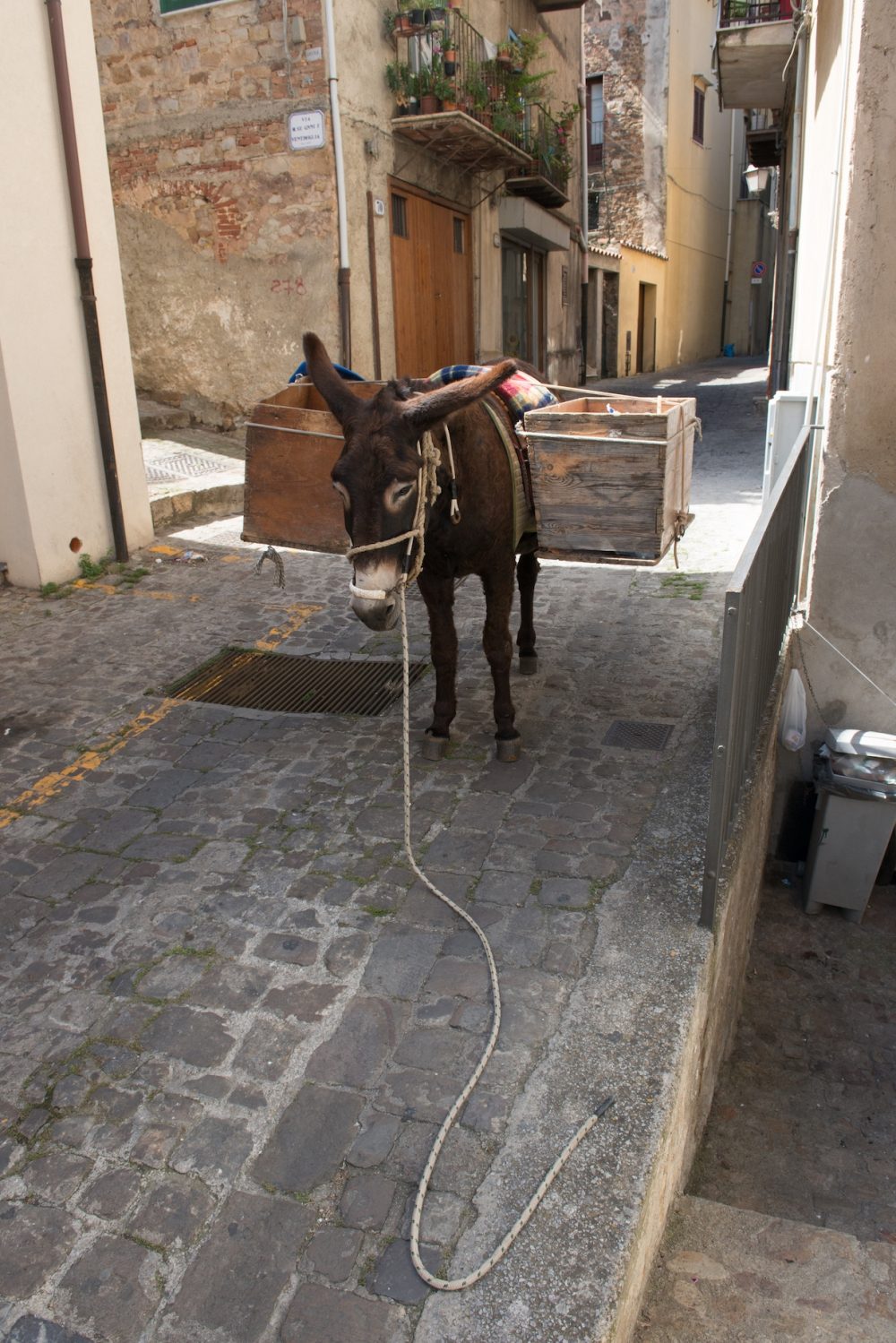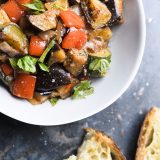Plodding diligently, the donkey knowingly navigates the cobblestone maze of Castelbuono. The man trails, matching the clap-clap-clap cadence of hooves. At each home in this tiny Sicilian town, a bag of trash dangles by a rope from the balcony. Wordlessly, he plucks each and tosses it into wooden boxes strapped to the animal’s flanks.
They work to a purposeful rhythm—an old solution to an older problem—walking a virtuous circuit as no truck could to green the city, save a breed and create jobs. My own circuit of Sicily, however, has been less productive, and even more plodding.
For days, I’ve circumnavigated the island, searching for the perfect plate of its iconic dish—caponata. Done well, this stew-like eggplant recipe is prototypical Sicilian cooking, the finest example of the agrodolce—a balance of sweet and sour—that defines so much of the region’s cooking, a melding of North African and Mediterranean flavors and influences.
But after dozens of samples, I’m disappointed. Too often, the vegetables are indistinct, victims of overcooking—often in deep slicks of oil—until their textures blur. Or the sugar and acid lack balance, each bite either bracingly sharp or achingly sweet. I begin to consider that perhaps caponata isn’t right for Milk Street.

On Sicily's twisty streets, donkeys go where garbage trucks can't.
Then I take a table at Sicilia in Tavola, a stone-arched trattoria in Siracusa. Owner Doriana Gesualdi presents her version and I’m wooed. Each bite contains chunks of eggplant, zucchini, pepper and onion that though married, remain true to themselves. The caponata is lighter, yet retains the appealing push and pull of sugar and vinegar. Served at room temperature with hunks of fresh bread to scoop it up, it tastes rich, satisfying and sweetly refreshing.
Gesualdi’s secret, it turns out, is all about pacing. Most cooks fry the eggplant in copious oil, then add all remaining ingredients and simmer an hour or more. At Sicilia in Tavola, each vegetable is cooked separately, then stirred together off heat, no further cooking needed. The result: Each is prepared perfectly without over- or undercooking others.
Adapting Gesualdi’s approach to Milk Street was simple. We followed her method and most of her ingredients. Our biggest variation was to season the finished dish with fresh basil instead of mint. We felt mint overpowered the other flavors and favored basil’s peppery-savory notes. Turns out, plodding along at a donkey’s pace could pay off.




